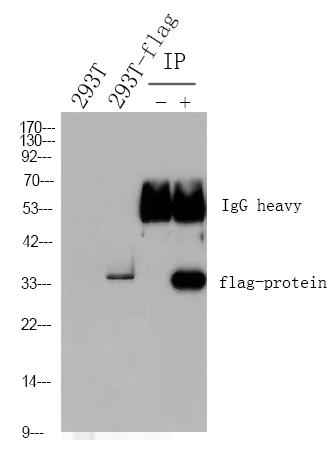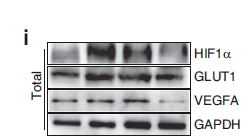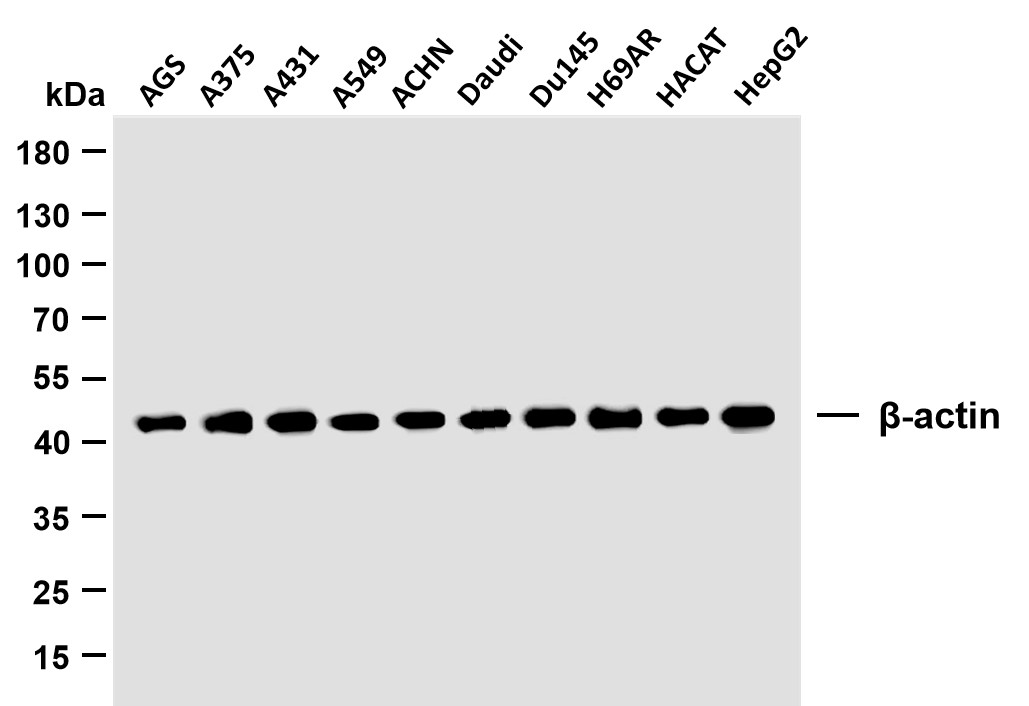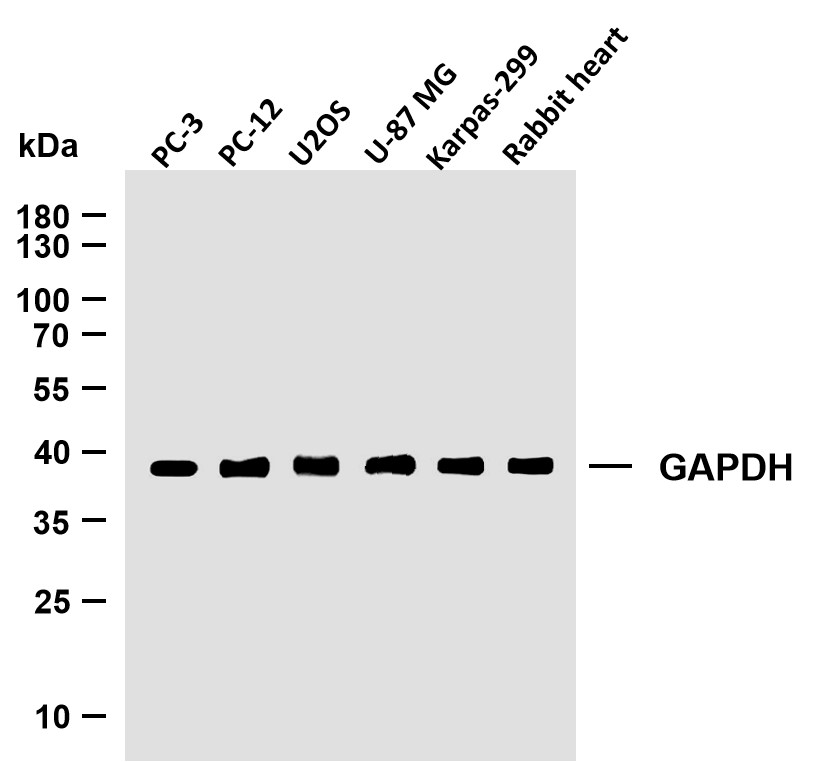
Catalog: YP0514
Size
Price
Status
Qty.
200μL
$600.00
In stock
0
100μL
$340.00
In stock
0
50μL
$190.00
In stock
0
Add to cart


Collected


Collect
Main Information
Target
NOS3
Host Species
Rabbit
Reactivity
Human, Mouse, Rat
Applications
WB, IF, ELISA
MW
130-140kD (Observed)
Conjugate/Modification
Phospho
Detailed Information
Recommended Dilution Ratio
WB 1:500-1:2000; IF 1:200-1:1000; ELISA 1:20000; Not yet tested in other applications.
Formulation
Liquid in PBS containing 50% glycerol, 0.5% BSA and 0.02% sodium azide.
Specificity
Phospho-NOS3 (S1177) Polyclonal Antibody detects endogenous levels of NOS3 protein only when phosphorylated at S1177.The name of modified sites may be influenced by many factors, such as species (the modified site was not originally found in human samples) and the change of protein sequence (the previous protein sequence is incomplete, and the protein sequence may be prolonged with the development of protein sequencing technology). When naming, we will use the "numbers" in historical reference to keep the sites consistent with the reports. The antibody binds to the following modification sequence (lowercase letters are modification sites):TQsFS
Purification
The antibody was affinity-purified from rabbit antiserum by affinity-chromatography using epitope-specific immunogen.
Storage
-15°C to -25°C/1 year(Do not lower than -25°C)
Concentration
1 mg/ml
MW(Observed)
130-140kD
Modification
Phospho
Clonality
Polyclonal
Isotype
IgG
Related Products
Antigen&Target Information
Immunogen:
The antiserum was produced against synthesized peptide derived from human eNOS around the phosphorylation site of Ser1176. AA range:1144-1193
show all
Specificity:
Phospho-NOS3 (S1177) Polyclonal Antibody detects endogenous levels of NOS3 protein only when phosphorylated at S1177.The name of modified sites may be influenced by many factors, such as species (the modified site was not originally found in human samples) and the change of protein sequence (the previous protein sequence is incomplete, and the protein sequence may be prolonged with the development of protein sequencing technology). When naming, we will use the "numbers" in historical reference to keep the sites consistent with the reports. The antibody binds to the following modification sequence (lowercase letters are modification sites):TQsFS
show all
Gene Name:
NOS3
show all
Protein Name:
Nitric oxide synthase endothelial
show all
Other Name:
NOS3 ;
Nitric oxide synthase ;
endothelial ;
Constitutive NOS ;
cNOS ;
EC-NOS ;
Endothelial NOS ;
eNOS ;
NOS type III ;
NOSIII
Nitric oxide synthase ;
endothelial ;
Constitutive NOS ;
cNOS ;
EC-NOS ;
Endothelial NOS ;
eNOS ;
NOS type III ;
NOSIII
show all
Database Link:
Background:
Nitric oxide is a reactive free radical which acts as a biologic mediator in several processes, including neurotransmission and antimicrobial and antitumoral activities. Nitric oxide is synthesized from L-arginine by nitric oxide synthases. Variations in this gene are associated with susceptibility to coronary spasm. Multiple transcript variants encoding different isoforms have been found for this gene. [provided by RefSeq, May 2009],
show all
Function:
Catalytic activity:L-arginine + n NADPH + n H(+) + m O(2) = citrulline + nitric oxide + n NADP(+).,cofactor:Binds 1 FAD.,cofactor:Binds 1 FMN.,cofactor:Heme group.,cofactor:Tetrahydrobiopterin (BH4). May stabilize the dimeric form of the enzyme.,enzyme regulation:Stimulated by calcium/calmodulin. Inhibited by NOSIP and NOSTRIN.,Function:Produces nitric oxide (NO) which is implicated in vascular smooth muscle relaxation through a cGMP-mediated signal transduction pathway. NO mediates vascular endothelial growth factor (VEGF)-induced angiogenesis in coronary vessels and promotes blood clotting through the activation of platelets.,online information:Nitric oxide synthase entry,polymorphism:Variation in NOS3 seem to be associated with susceptibility to coronary spasm.,similarity:Belongs to the NOS family.,similarity:Contains 1 FAD-binding FR-type domain.,similarity:Contains 1 flavodoxin-like domain.,subcellular location:Specifically associates with actin cytoskeleton in the G2 phase of the cell cycle; which is favored by interaction with NOSIP and results in a reduced enzymatic activity.,subunit:Homodimer. Interacts with NOSIP and NOSTRIN.,tissue specificity:Platelets, placenta, liver and kidney.,
show all
Cellular Localization:
Cell membrane. Membrane, caveola. Cytoplasm, cytoskeleton. Golgi apparatus. Specifically associates with actin cytoskeleton in the G2 phase of the cell cycle; which is favored by interaction with NOSIP and results in a reduced enzymatic activity.
show all
Tissue Expression:
Platelets, placenta, liver and kidney.
show all
Research Areas:
>>Arginine biosynthesis ;
>>Arginine and proline metabolism ;
>>Metabolic pathways ;
>>Calcium signaling pathway ;
>>cGMP-PKG signaling pathway ;
>>HIF-1 signaling pathway ;
>>Sphingolipid signaling pathway ;
>>PI3K-Akt signaling pathway ;
>>VEGF signaling pathway ;
>>Apelin signaling pathway ;
>>Platelet activation ;
>>Estrogen signaling pathway ;
>>Oxytocin signaling pathway ;
>>Relaxin signaling pathway ;
>>Insulin resistance ;
>>AGE-RAGE signaling pathway in diabetic complications ;
>>Diabetic cardiomyopathy ;
>>Lipid and atherosclerosis ;
>>Fluid shear stress and atherosclerosis
>>Arginine and proline metabolism ;
>>Metabolic pathways ;
>>Calcium signaling pathway ;
>>cGMP-PKG signaling pathway ;
>>HIF-1 signaling pathway ;
>>Sphingolipid signaling pathway ;
>>PI3K-Akt signaling pathway ;
>>VEGF signaling pathway ;
>>Apelin signaling pathway ;
>>Platelet activation ;
>>Estrogen signaling pathway ;
>>Oxytocin signaling pathway ;
>>Relaxin signaling pathway ;
>>Insulin resistance ;
>>AGE-RAGE signaling pathway in diabetic complications ;
>>Diabetic cardiomyopathy ;
>>Lipid and atherosclerosis ;
>>Fluid shear stress and atherosclerosis
show all
Signaling Pathway
Organismal Systems >> Immune system >> Platelet activation
Organismal Systems >> Endocrine system >> Estrogen signaling pathway
Organismal Systems >> Endocrine system >> Oxytocin signaling pathway
Organismal Systems >> Endocrine system >> Relaxin signaling pathway
Environmental Information Processing >> Signal transduction >> VEGF signaling pathway
Environmental Information Processing >> Signal transduction >> Apelin signaling pathway
Environmental Information Processing >> Signal transduction >> HIF-1 signaling pathway
Environmental Information Processing >> Signal transduction >> Calcium signaling pathway
Environmental Information Processing >> Signal transduction >> Sphingolipid signaling pathway
Environmental Information Processing >> Signal transduction >> cGMP-PKG signaling pathway
Environmental Information Processing >> Signal transduction >> PI3K-Akt signaling pathway
Reference Citation({{totalcount}})
Catalog: YP0514
Size
Price
Status
Qty.
200μL
$600.00
In stock
0
100μL
$340.00
In stock
0
50μL
$190.00
In stock
0
Add to cart


Collected


Collect
Recently Viewed Products
Clear allPRODUCTS
CUSTOMIZED
ABOUT US
Toggle night Mode
{{pinfoXq.title || ''}}
Catalog: {{pinfoXq.catalog || ''}}
Filter:
All
{{item.name}}
{{pinfo.title}}
-{{pinfo.catalog}}
Main Information
Target
{{pinfo.target}}
Reactivity
{{pinfo.react}}
Applications
{{pinfo.applicat}}
Conjugate/Modification
{{pinfo.coupling}}/{{pinfo.modific}}
MW (kDa)
{{pinfo.mwcalc}}
Host Species
{{pinfo.hostspec}}
Isotype
{{pinfo.isotype}}
Product {{index}}/{{pcount}}
Prev
Next
{{pvTitle}}
Scroll wheel zooms the picture
{{pvDescr}}





















